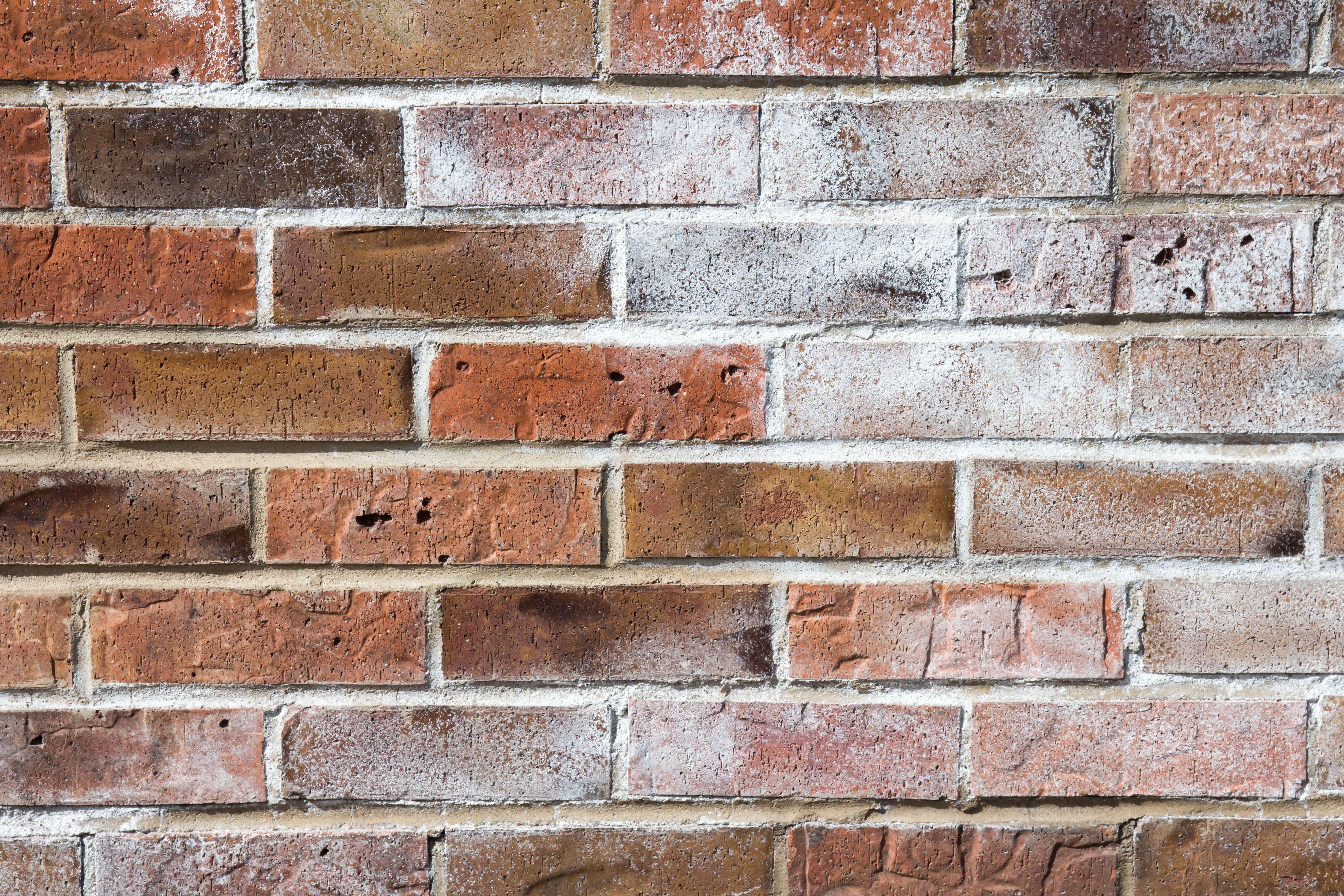What is new building bloom?
No, I didn’t misspell "building boom." I’m referring to efflorescence, which is when salt deposits form on the surface of masonry.
Whether you are using brick, concrete masonry, grouts, or mortars, there can be some trace of soluble salts in the product. When water is introduced to the masonry, efflorescence occurs and these salts make an unsightly appearance on the face of your new project.
New Building Bloom on Your Masonry Veneer
While this white powder isn’t aesthetically pleasing on a new building, it will usually go away after a few rain storms and is preventable most of the time.
Now, ideally your project will be designed from the beginning to make sure moisture – no matter whether it’s ice, snow, or rain – never dwells on the masonry for a long period of time. However, if your building is already built, and the efflorescence continues to appear, it can be a sign of larger workmanship or design issues that can lead to structural deterioration.
Masonry professionals often refer to this unsightly substance as new building bloom. According to the American Concrete Institute, it is “usually white, formed on a surface, the substance having emerged in solution from within either concrete or masonry.”
Preventing Efflorescence on a Build
We’ve covered this topic before on Industry Insights. However, you’ve shown interest in learning more about preventing efflorescence and new building bloom, which is why I’ve compiled a list of five items to look out for while your masonry wall is being built. Thanks to Gary Clark with Echelon who helped pull this information together.
1. Bad weather
Keeping an eye on your favorite weather site, radio station, TV channel, or app is key when you are installing masonry. If you know bad weather is moving in to the area of your project, make sure your mason covers the cavity. Otherwise, you are introducing water that can lead to efflorescence.
In addition, use a waterproof cover on the materials stored at the job site and cover unfinished walls to prevent water from entering prior to completion.
2. Properly Installed Flashing
Make sure all your flashing around windows, the roof, and other openings are installed accurately and per the manufacturer’s guidelines. Water does not always hit the window from the same direction, so making sure it is installed correctly for your window type will help keep moisture out of your building.
 3. Mortar Additives
3. Mortar Additives
Use with caution. While there are admixtures that can successfully repel water, there are others that when mixed incorrectly can lead to bigger problems.
If additives are used to prevent the mortar from drying too slowly, protecting the masonry from the cold and heating mortar ingredients may be an alternative solution. If additives are needed, make sure that they don’t contain chlorides, which are corrosive and promote efflorescence
4. Weep Holes
In the situation that water does get into your wall, make sure you have the proper weep holes (along with the flashing) that allow the water to drain and exit the masonry wall. Such holes also allow an air stream which can remove additional moisture and help vent the structure. Just make sure the cavities don’t have mortar drippings in them that can cause water damming.
5. Appropriate Mortar on Head Joints
Make sure all head joints have the proper amount of mortar which protects against water working its way into the cavity.
Removing Efforescence
If you took precautions yet your new construction project still shows signs of building bloom, don’t worry. The first thing you should do is figure out where water is entering the building.
 The white soluble salts on the wall are an indicator that the moisture entry point is somewhere nearby. Fix the problem (check flashings, look for eroded joints, etc.), and after the wall dries out (and a few rain cycles have passed), you should see the efflorescence growth cease.
The white soluble salts on the wall are an indicator that the moisture entry point is somewhere nearby. Fix the problem (check flashings, look for eroded joints, etc.), and after the wall dries out (and a few rain cycles have passed), you should see the efflorescence growth cease.
You should try to remove the efflorescence as soon as possible. The salt deposits can only be washed with water for a small window of time before the air exposure makes them even harder to remove.
PLEASE: Do not use a power washer to remove these salts. Nothing good comes from this! The pressure of these washers can push water back into the wall which can cause another cycle of efflorescence and could cause damage to your masonry.
The best way to remove the salts are with a dry brush or with non-pressurized water. A heavy wooden scraper can also be used along with masonry cleaners.
You don’t want all of that scrubbing to be in vain, though. Make sure you address the bigger moisture problem first, or those white deposits can show up again and you run the risk of even worse problems such as mold, rot, and structural deterioration.
Interest in Learning More About Masonry?
Check out our guide on advances in thin veneers and how they can improve aesthetics and help with moisture control.


